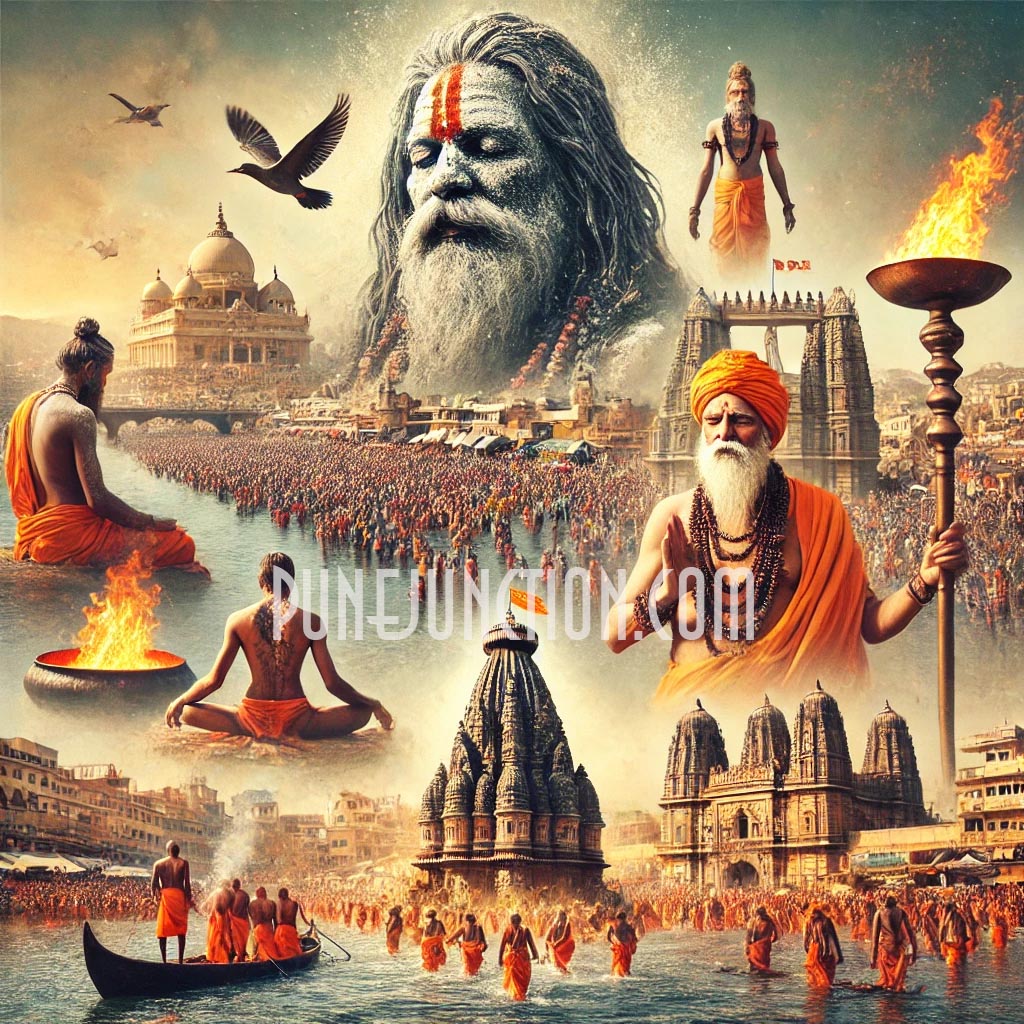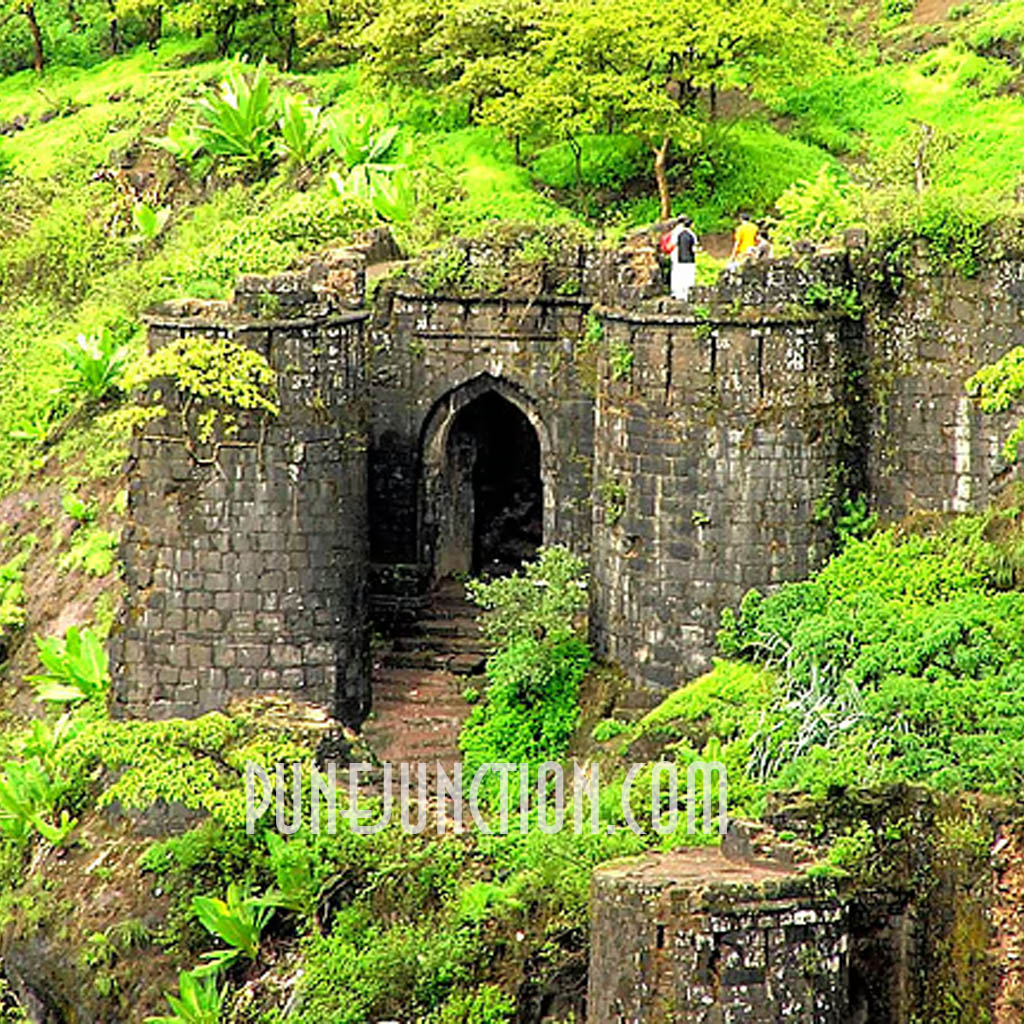
Introduction
The Kumbh Mela is one of the largest and most sacred religious gatherings in the world, held at four locations in India: Haridwar, Prayagraj (Allahabad), Nashik, and Ujjain. Among these, the Nashik Kumbh Mela is considered highly significant, drawing millions of pilgrims, saints, and spiritual seekers from across the globe. It takes place on the banks of the Godavari River, often referred to as the “Ganga of the South.”
The Nashik-Trimbakeshwar Simhastha Kumbh Mela, a major religious event, is scheduled to take place from July 17 to August 17, 2027.
Significance & Mythological Importance
The origin of the Kumbh Mela is linked to Hindu mythology, specifically the Samudra Manthan (Churning of the Ocean). According to legend, during the great churning of the ocean by the Devas (gods) and Asuras (demons), a divine nectar called Amrit (elixir of immortality) was discovered. As both groups fought for its possession, Lord Vishnu, in the form of Mohini, took the pot (Kumbh) and flew across the skies. During this celestial journey, drops of Amrit fell at four places—Haridwar, Prayagraj, Nashik, and Ujjain—making them the sacred sites of the Kumbh Mela.
Nashik holds special importance because it is associated with Lord Rama, who is believed to have lived in Panchvati (a region in Nashik) during his exile. The Godavari River, where the sacred rituals of the Kumbh Mela take place, is also said to have been blessed by divine presence, making it a spiritually powerful location.
Spiritual and Cultural Importance
The Nashik Kumbh Mela is more than just a religious event—it is a spiritual awakening, a cultural spectacle, and a symbol of devotion. Here’s why it is important:
1. The Holy Dip (Shahi Snan)
The most sacred ritual of the Kumbh Mela is the Shahi Snan (Royal Bath) in the Godavari River. Devotees believe that taking a dip in the river during this auspicious period cleanses one of all sins and helps attain moksha (liberation from the cycle of rebirth).
2. Presence of Saints & Sadhus
One of the highlights of the Nashik Kumbh Mela is the presence of thousands of sadhus, ascetics, and spiritual leaders from various sects, including:
- Naga Sadhus – Warriors of Lord Shiva, known for their strict penance and renunciation.
- Aghori Sadhus – Mystics who follow unconventional spiritual practices.
- Vaishnav Sadhus – Devotees of Lord Vishnu.
- Kalpvasis – Pilgrims who live a life of strict discipline during the Mela.
The gathering of such revered saints provides devotees an opportunity to seek blessings and gain spiritual wisdom.
3. Religious Discourses & Yajnas
The Kumbh Mela is also a platform for spiritual learning, with many saints and gurus delivering discourses on Vedic scriptures, yoga, and meditation. Large yajnas (fire rituals) and prayers are conducted to bring prosperity and peace to the world.
4. Astrological & Cosmic Importance
The Kumbh Mela is held when the planets align in a way that enhances the spiritual energy of the region. The Nashik Kumbh is observed when the planet Jupiter (Guru) enters Leo (Simha Rashi) and aligns with the Sun and Moon in a specific zodiac position, making it an especially auspicious time for spiritual growth.
Major Attractions of Nashik Kumbh Mela
- Trimbakeshwar Temple – One of the 12 Jyotirlingas of Lord Shiva, located near Nashik, is a major pilgrimage site during the Kumbh Mela.
- Panchvati – A sacred area associated with Lord Rama’s exile, featuring temples like Sita Gufa and Kalaram Temple.
- Sadhugram – A special area designated for sadhus and ascetics during the Kumbh Mela.
- Kalaram Temple – An important temple dedicated to Lord Rama, built with black stone.
- Muktidham Temple – A modern temple that has replicas of the 12 Jyotirlingas from across India.
Logistics & Travel Information
🚆 How to Reach Nashik:
- By Air: Nearest airport is Ozar Airport (Nashik) or Mumbai Airport (170 km away).
- By Train: Nashik Road Railway Station is well-connected to major cities.
- By Road: Nashik is easily accessible by buses and private vehicles from Mumbai, Pune, and other cities.
🏨 Accommodation Options:
During the Kumbh Mela, Nashik offers a range of hotels, dharamshalas, camps, and government-arranged tents for visitors.
Safety & Crowd Management
Since millions of devotees attend the Kumbh Mela, crowd management and security are top priorities. Authorities implement strict traffic control, medical services, lost-and-found centers, and emergency response teams to ensure a smooth experience for pilgrims.
Safety Tips for Visitors:
✔️ Stay in designated areas and avoid overcrowded places.
✔️ Carry minimal belongings and safeguard your valuables.
✔️ Follow local guidelines and listen to announcements.
✔️ Plan your travel to avoid peak rush hours during Shahi Snan days.
Conclusion
The Nashik Kumbh Mela is not just a pilgrimage; it is a spiritual, cultural, and social phenomenon that unites millions of devotees in their quest for divine blessings. With its deep-rooted mythology, celestial significance, and profound spiritual energy, attending the Kumbh Mela in Nashik is a once-in-a-lifetime experience that promises inner transformation and peace.
Whether you are a devotee, a spiritual seeker, or simply someone interested in experiencing India’s rich cultural and religious heritage, the Kumbh Mela at Nashik is an event that should be on your bucket list.
🙏 Har Har Mahadev! Jai Shri Ganesha! 🙏







